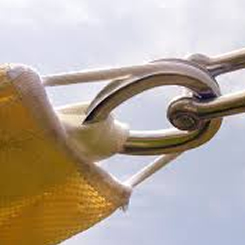
Shade Sail Manufacturer sees Sunny Side of Standards
“It pays to plan ahead, it wasn’t raining when Noah built the ark”
Background
A small company with 10 employees designs and manufactures shade cloth structures for clubs, commercial buildings and private homes. The product is designed using advanced software techniques to model shapes and stresses within the flexible fabric which is supported by ribs, columns and other mechanical means. The end product is architecturally in keeping with the building design and is often specified at the building design stage.
The company was looking for ways to improve their processes and at the same time gain leverage with government customers. They wanted to play in the big end of town with bigger and more prestigious projects.
They underwent an Enterprise Connect Business Review which suggested, amongst other things, that they should embark on the implementation of ISO 9001, Requirements for Quality Management Systems. Such an implementation would allow them to achieve their goals and at the same time improve their ability to market their skills and products.
Implementation
Our Inform Senior Consultant was successful in tendering for the implementation, work commenced in 2011 and steadily progressed throughout the year until the system was up and fully operating for year end
During the process it is necessary to evaluate and rate suppliers. It soon became apparent that like many other small Australian Manufacturers, the company was at a considerable disadvantage with the large multinationals that supply their major component (in this case the fabric) for their installations.
Time and time again they were paid lip service by the local agent. Trying different manufacturers did not seem to alter the fact that they had little ability to negotiate when it came to price and quality issues.
Problem Solved
The client had one particular instance where a shade structure was installed in a very warm and humid environment. After a short period mould and dirt started to build up on the fabric causing unsightly stains. Needless to say the Customer was not happy. Neither was the Client as at his own expense, he had professional cleaners up there two or three times, trying to rectify the problem. Numerous complaints to the distributors of the product fell on deaf ears.
Our Consultant was contacted and suggested that they send their new Corrective Action Report to the European supplier directly, bypassing the distributor and see what happens. The supplier was ISO 9001 certified and theoretically should take the problem seriously if they are in keeping with the requirements of the Standard.
The response was almost immediate. The fabric manufacturer agreed to cover the cost of all the cleaning, directed the local distributor to do whatever he could to assist with the issue and vowed to undertake a climatic research project to determine the root cause and permanently solve the problem. His actions were exactly as what should be expected of a Certified Quality Endorsed Company.
The Lesson Learned
A professionally implemented ISO 9001 Quality Management System is more than just a way of improving your own product or convincing prospective customers that you are a worthy supplier. It gives you the tools to refine you business and processes so as to streamline your systems and save money as well as improve your product quality. As seen in our Case Study above, a Quality Management System can help you work with your local and international suppliers to drive down costs and ensure continual improvement.







